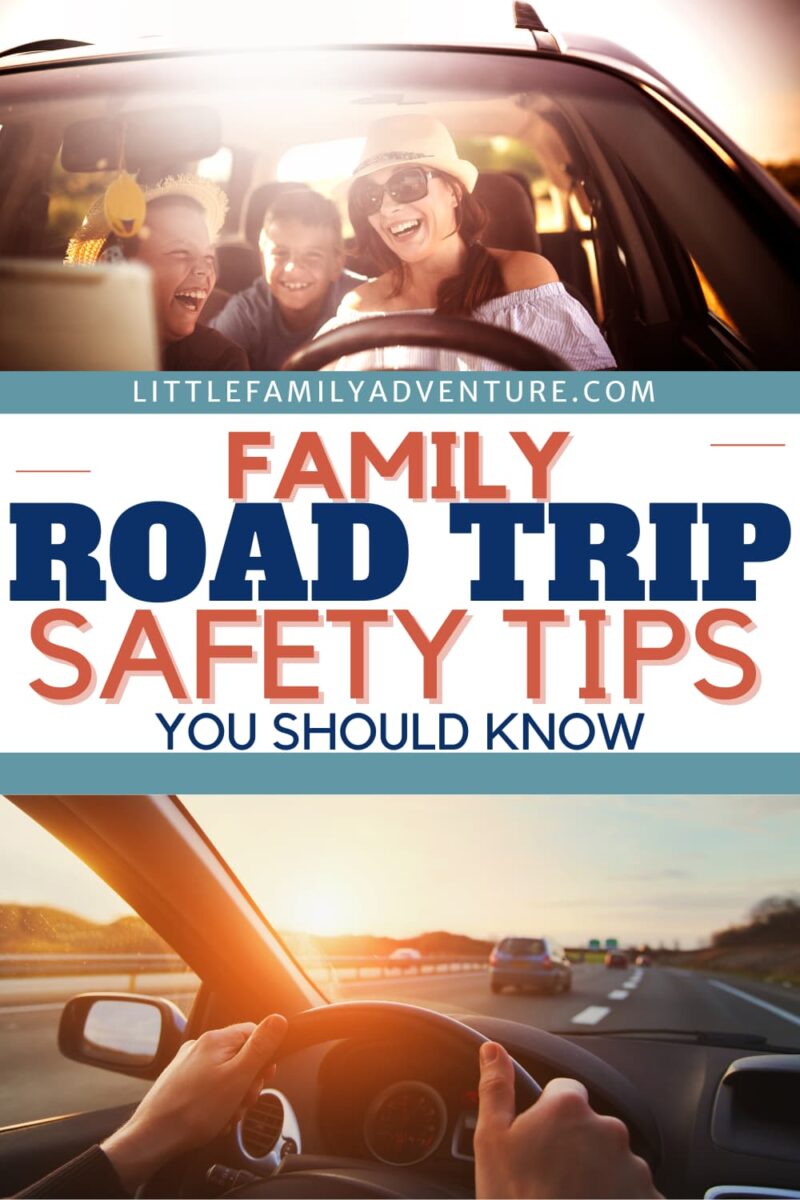Family road trips offer a unique chance for bonding and adventure. Exploring new places, playing travel games, and creating unforgettable memories bring parents and kids closer together.
However, ensuring safety on the road is crucial, and it’s not something you can overlook during trip preparations. From maintaining your vehicle to brushing up on your defensive driving techniques, keeping everyone safe requires careful planning and preparation.
This article contains affiliate links. We earn from qualifying purchases.
So, if you want to have a fun adventure that everyone will remember fondly for a long time, here are four essential road safety tips to consider for your next family road trip.
1. Be Prepared for Anything
Preparation is key to a safe and enjoyable road trip, and we’re not talking just about snacks and games to keep the kids busy during long drives.
You also have to think about the darker scenarios, like what steps to take in a head-on collision case, for instance. It’s not something you even want to think about happening, but it is a reality of our world, so you should try to prepare yourself for it.
Start by minimizing in-car distractions. Set up devices before hitting the road, and keep conversations light to help the driver focus. This simple practice can significantly reduce accident risks.
If you do get in an accident despite precautions (life happens whether you like it or not), it’s crucial to know the immediate steps post-collision. For instance, the first thing to do is check for injuries and call emergency services immediately. Only after you’ve done all these is it time to move your vehicle to a safe spot (if possible).
Understanding what actions to take during such stressful events makes all the difference in maintaining composure and protecting your family. Familiarize yourself with specific guidelines – knowing them well prepares you better than any precaution alone.
2. Keep Your Vehicle Maintenance Up-to-date
You don’t want to be on your merry way, car loaded with kids and their devices and games, only to break down halfway between your starting point and destination. This would definitely be a vacation everyone will remember as the worst possible one.
This is why vehicle maintenance is essential before a road trip. Of course, you should keep regular checks to prevent unexpected breakdowns and ensure the car operates efficiently. They also identify potential issues before they become serious problems.
Key components to inspect include brakes, tires, and fluids. Good brakes are vital for stopping quickly and safely in emergencies. Properly inflated tires with good tread provide better traction and reduce the risk of blowouts. Checking engine oil, coolant, and brake fluid levels keeps your car running smoothly.
Decide between professional vs. DIY maintenance based on your comfort level with automotive tasks. While you can handle simple checks like tire pressure or oil levels yourself, complex issues may require a mechanic’s expertise (ensuring thorough inspection).

3. Learn Defensive Driving Techniques
Defensive driving techniques are designed with safety (and common sense) in mind. For instance, you should learn to observe and anticipate other drivers’ actions – expect the unexpected. This mindset allows quicker reactions to sudden moves, like abrupt lane changes or stops.
Additionally, maintaining safe following distances is crucial. Keep a minimum of three seconds between your car and the vehicle in front, and extend the distance in adverse weather conditions. Ample space gives you time to react calmly to potential hazards without causing rear-end collisions.
Lastly, proper use of signals and mirrors plays a significant role as well. Signal early before changing lanes or turning, ensuring others understand your intentions clearly. Regularly check mirrors for situational awareness, especially in heavy traffic or unfamiliar areas.
4. The Seatbelt is for Everyone
Seatbelts are non-negotiable for every passenger!
Recent data shows that seatbelts reduce the risk of fatal injury by 45% in cars and 60% in SUVs. So, make sure everyone is buckled up correctly before leaving your driveway. The good news is that it doesn’t take longer than 10 minutes – make sure all belts are fastened securely, with no slack or twists.
Special considerations apply to children and car seats. Use appropriate child safety seats based on age, weight, and height guidelines. Install them according to manufacturer instructions and ensure they fit snugly and are positioned correctly (rear-facing for infants). Double-check harnesses to keep young passengers safe during any impact.
Wrap Up
Family road trips create lasting memories, but safety remains paramount. Keep your vehicle well-maintained, drive carefully, minimize distractions, and ensure everyone uses seatbelts correctly. Follow these tips diligently to enjoy a relaxed and secure journey with your loved ones!




Leave a Reply